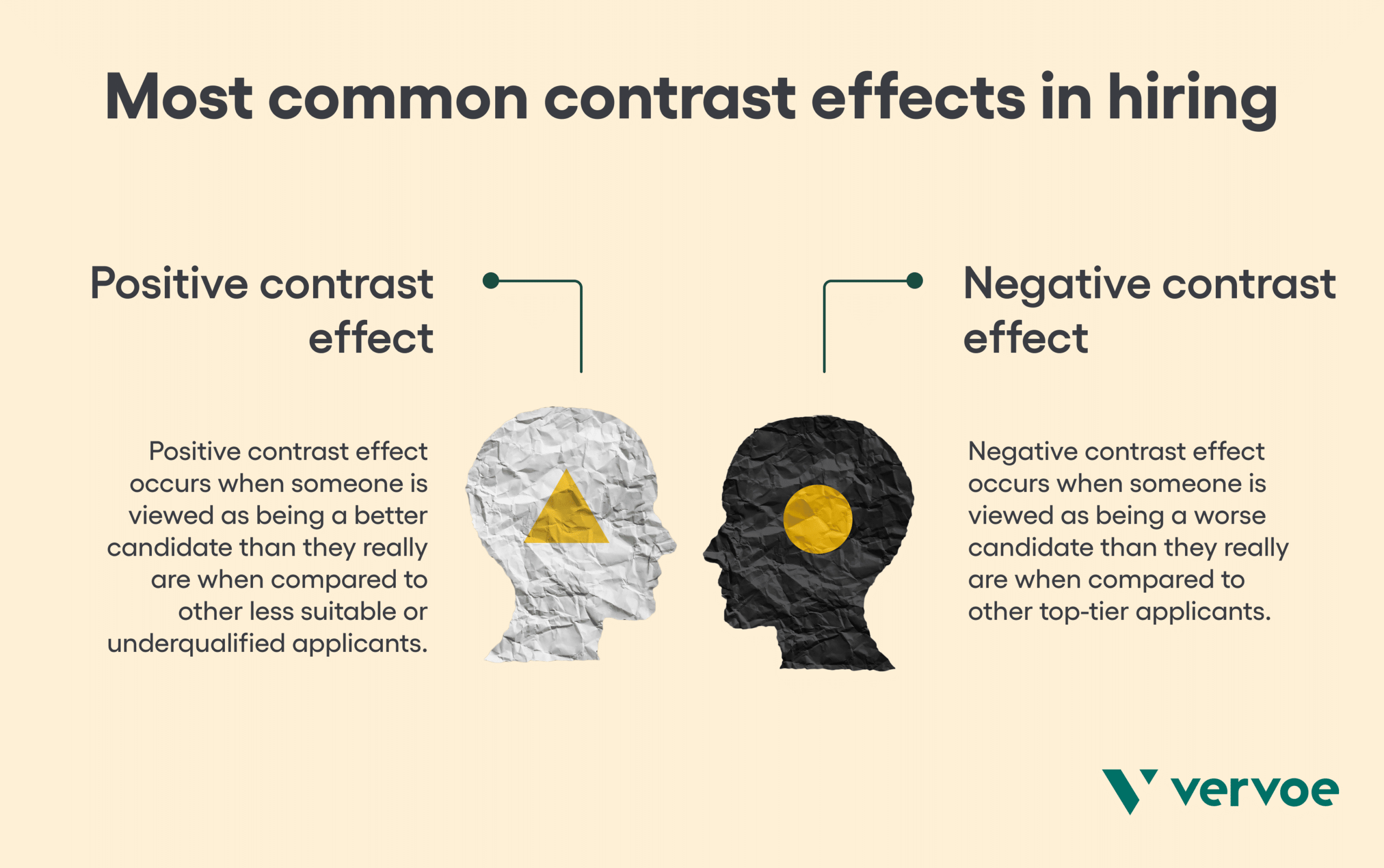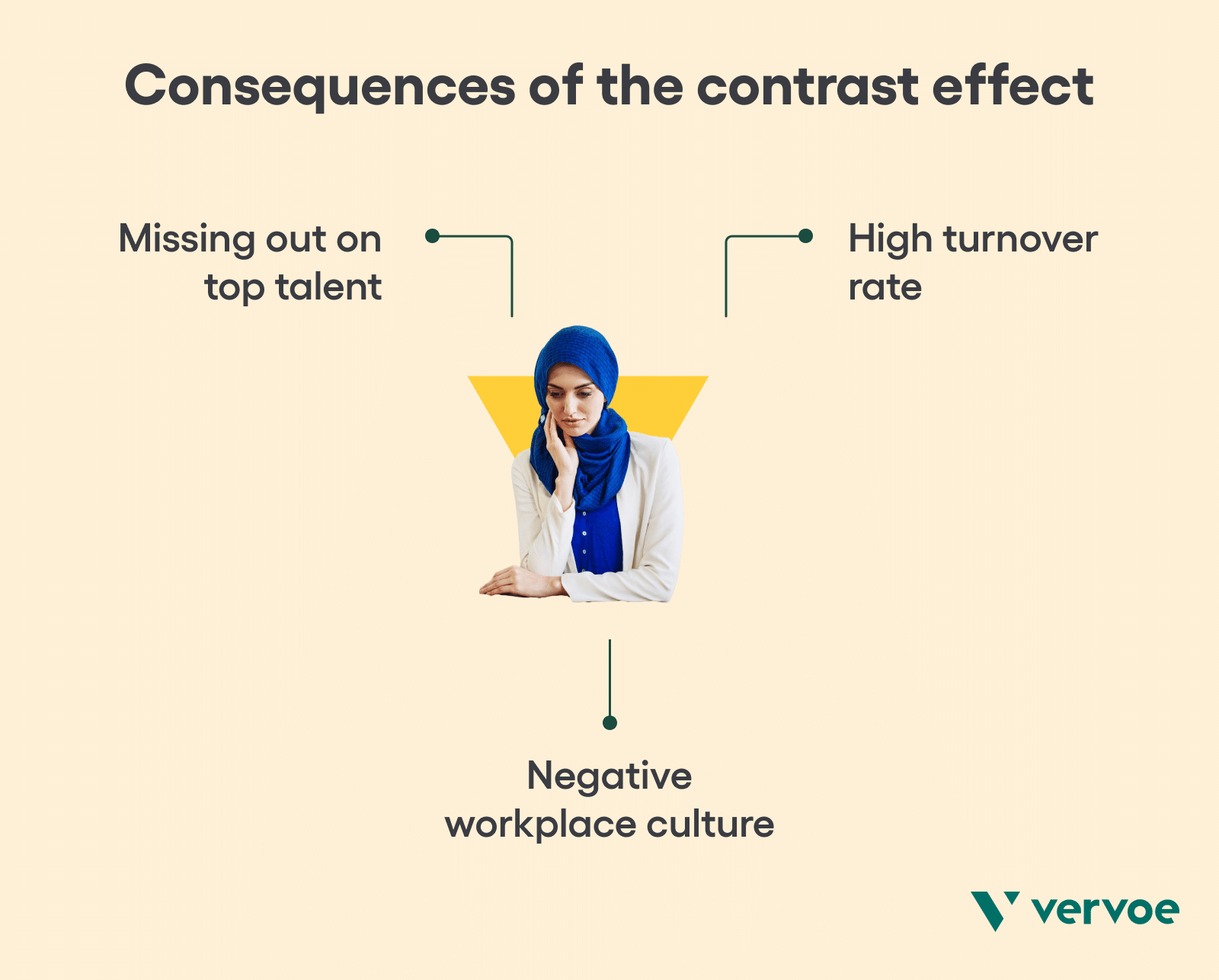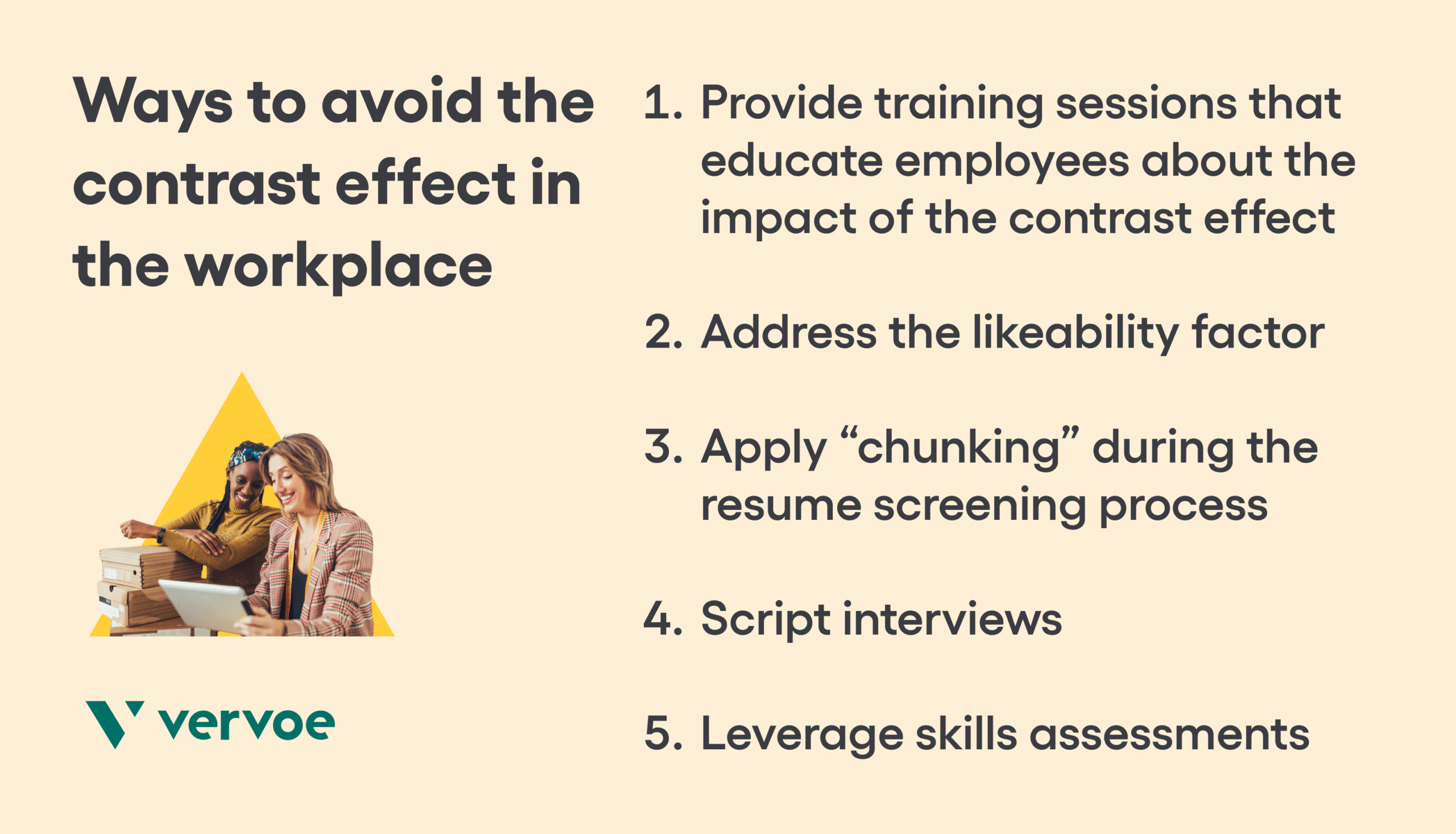As humans, we use comparison to highlight differences and make decisions all the time.
Whether it’s evaluating items of food in the grocery store, cars on a lot, or clothes on a rack, analyzing things side by side illuminates characteristics we may have otherwise overlooked.
For example:
- A light grey square of color will appear even lighter when it is placed next to something of a much darker shade.
- A tall person looks even taller when they are standing next to a small person.
- Sweet drinks or snacks taste super sweet when you consume them immediately after eating something savory.
- An expensive car looks extra flashy if parked next to a dusty pick-up truck.
- Expensive products seem reasonably priced if they are listed on a website or arranged in a shop alongside items with an even higher price tag.
- An average job candidate looks great in a talent pool of otherwise poor applicants.
Many of these observations are meaningless until they’re being compared. Yet, they are differences that end up being used to make final decisions on what to eat, what to buy, and who to hire. And when it comes to hiring, letting the contrast between candidates influence you can lead to unconscious bias.
In this article, we’ll take a look at contrast effect, why it’s always a risk when reviewing job applicants, and how to avoid it.
What is contrast effect?
The definition of contrast effect bias is a type of unconscious bias that occurs when we evaluate two things in comparison to each other, rather than assessing them individually. Doing so enhances differences, alters our perception, and makes it very difficult to judge something (or someone) based on its individual merits.
Most common contrast effects in hiring
While many instances of contrast effect psychology are completely harmless, it does have some negative implications for recruitment. The two contrast effects that most commonly show up during the hiring process are…
Positive contrast effect
Positive contrast effect occurs when someone is viewed as being a better candidate than they really are when compared to other less suitable or underqualified applicants.
Negative contrast effect
Negative contrast effect occurs when someone is viewed as being a worse candidate than they really are when compared to other top-tier applicants.
In both cases, recruiters and hiring managers are making snap decisions about the quality of a candidate based on how they compare to the rest of the talent pool instead of their skills, work experience, expertise, and suitability for the role. The consequence of this is that weaker candidates might advance through the recruitment process while some stronger candidates may be overlooked entirely.
What causes the contrast effect in recruitment?
The contrast effect is a seemingly easy way to rank candidates and make hiring decisions, which is why it pops up so often during the recruitment process.
Recruiters and hiring managers are typically short on time and resources when it comes to processing dozens, if not hundreds, of applications for any given role. So if they can make their lives a little easier by directly comparing candidates and ultimately choosing the cream of the crop, why wouldn’t they?
Candidate A and Candidate B
Imagine Candidate A and Candidate B come in for an interview on Monday. Both perform well but Candidate A is significantly more qualified and has a couple of extra years of experience. They are immediately offered one of the two open positions.
The problem is, while it might seem logical at first, this is a highly unreliable and inaccurate approach to candidate screening. Recruiters and hiring managers will likely end up comparing two applicants at random, perhaps because they applied for the role at the same time or their resumes were reviewed in quick succession.
Candidate C and Candidate D
Let’s introduce Candidate C and Candidate D to the mix. Both come in for an interview the following Monday. Candidate D, though engaging and charming, is significantly underqualified and immediately rejected. Candidate C doesn’t quite meet the hiring criteria but they are legions ahead of Candidate D and so they are also offered a position, despite being far less suitable than Candidate B. In this instance, positive contrast effects have resulted in Candidate C securing a role, while negative contrast effects were detrimental to Candidate B.
Furthermore, let’s not forget that the contrast effect is a subconscious bias. This means that recruiters and hiring managers might well be assessing and comparing previous candidates based on irrelevant details, such as their likeability or body language, instead of more important factors like experience, qualifications, and skill set.
Candidate E
Finally, we need to consider Candidate E. This candidate came in for their interview on the same day as Candidate C and Candidate D but was dismissed almost immediately due to their stand-offish body language and disinterested demeanor. In actual fact, Candidate E is the most qualified candidate of the five. Not only have they racked up many years of work experience but they also possess the most relevant skillset. Yes, they are more reserved than their fellow applicants, but they usually just need a little time to warm up. Plus, as someone from a marginalized community, being confronted with a large and homogenous interview panel was slightly off-putting.
In this scenario, Candidate A and Candidate C are offered positions. But we know the two best performers to be Candidate A and Candidate E. Ranking in fourth place, Candidate C could very well be a bad hire and the hiring organization has also missed out on recruiting a star performer in Candidate E.
Examples of contrast effect in the workplace
The contrast effect first presents itself during the resume-screening process. When two applications are viewed one after the other, a recruiter or hiring manager might immediately lean towards one candidate.
This could be because they are genuinely more qualified or it might be based on a less viable factor, such as the applicant having attended a well-known school. Whatever the reason, this puts the other candidate at a significant disadvantage because they are not being scored on their own merits.
Furthermore, once one person is in favor, confirmation bias will see the recruiter or hiring manager attempting to affirm their initial assumptions. This means honing in on additional things they like about their preferred candidate and ignoring the factors that paint them in a less good light.
A similar process happens when it comes to interviewing applicants. For example, if an interviewer connects with one candidate, who is outgoing and charming, a second candidate with a less overt communication style will likely score much lower. On the other hand, the person who enters the room following a terrible interview may seem like a perfect hire by comparison.
The contrast effect impacts the existing workforce too. Someone might be exceeding targets, working hard, and contributing to the workplace culture but this is not reflected fairly in their performance reviews or career progression because they are forever being compared to the star employee in their team.
The term “contrast error” is relevant here – describing what happens when a candidate is scored incorrectly during an appraisal because a certain employee has set a benchmark that influences everyone else’s review.
Consequences of the contrast effect
When organizations fail to fairly rate applicants based on merit, it distorts the information collected during the recruitment process and ultimately leads to bad hiring decisions and an unhappy workplace.
1. Missing out on top talent
The combination of bad luck and the personal biases held by some recruiters and hiring managers means that good candidates can miss out on job opportunities for which they would have been well suited.
2. High turnover rate
Employee satisfaction and motivation will take a hit if individuals feel they are being unfairly ranked against their colleagues or undervalued for their contributions. Unhappy employees will look to advance their careers elsewhere, driving up turnover rates and recruitment rates.
3. Negative workplace culture
Even if employees do stick around, workplace culture will take a hit. Competition and comparison between colleagues, particularly when it is largely unjustified and unnecessary, breeds resentment, drives conflicts and quashes teamwork.
Ways to avoid the contrast effect in the workplace
Here are a few ways to overcome the contrast effect at work…
1. Provide training sessions that educate employees about the impact of the contrast effect
Educating hiring managers and recruiters about the contrast effect can help limit its impact on the recruitment process. Training sessions can be used to address where and how the contrast effect is most likely to show up, the negative impacts of this kind of bias on your business, how best to structure interviews, and advice on ranking candidates on their individual merits.
2. Address the likeability factor
In every aspect of our daily lives, we are drawn to the people we relate to most. But this isn’t important when it comes to recruiting top talent for your organization. In fact, it’s far better to hire a team of people with diverse backgrounds, experiences, and perspectives.
Establishing diverse interview panels, for example, and implementing a scoring system for candidate shortlisting can help balance out the natural tendency to hire “likable” or relatable candidates.
3. Apply “chunking” during the resume screening process
An effective way to mitigate the impact of the contrast effect is to put significant distance and time between two things you are inclined to compare. Unfortunately, recruiters and hiring managers don’t have the luxury of being able to process each resume in isolation. But ‘chunking’ applications can have much the same effect.
Rather than viewing resumes one at a time and in their entirety, “chunking” is the process by which an application is anonymized and broken down answer by answer, not candidate by candidate. Answers to each section of the application are then randomized, which makes it impossible for one candidate to be compared to another on more than one occasion and, even then, only in small “chunks.”
4. Script interviews
If interviewers ask different questions on different days it becomes much harder to fairly mark and rank all applicants.
By insisting that recruiters and hiring managers adhere to a script and assessment criteria, it becomes much easier to compare and contrast all candidates and give everyone an equal shot at success.
5. Leverage skills assessments
An organization can significantly reduce unconscious bias in their recruitment process by investing in a skills testing tool, that is designed to be impartial and easily customizable.
For example, during the resume screening process, hiring managers and recruiters can tailor assessments to address the skills and capabilities they are recruiting for. Later on, in the recruitment process, situational tests can be leveraged to observe how shortlisted candidates will perform in different scenarios.
At Vervoe, our algorithm scores candidates using a multi-layered approach. Candidates are ranked based on how well they performed, rather than filtered out if they didn’t achieve a certain benchmark.
When candidates are shortlisted and hired based exclusively on their ability to perform well in a specific role, and not how they compare to other candidates, they tend to stay longer in a role and perform better over the long term.
Summary
The contrast effect is a type of unconscious bias that can impede a fair and effective recruitment process.
By comparing candidates to one another, instead of assessing them on their individual merits, organizations risk making bad hires, driving higher turnover rates, and fostering an unhappy and resentful workforce.
To tackle the impact of the contrast effect, recruiters and hiring managers should roll out unconscious bias training, resume “chunking” and skills testing, focusing less on differences between candidates, and more on their ability to do the job.























